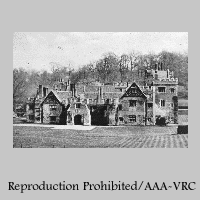
1. Compton Wynyates, Warwickshire (c. 1520), built by Edmund Compton and his son William during the reigns of Henry VII and Henry VIII.

1. Compton Wynyates, Warwickshire (c. 1520), built by Edmund Compton and his son William during the reigns of Henry VII and Henry VIII.
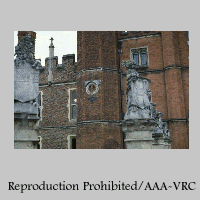
2. Hampton Court Palace. View of gatehouse showing Romayne work (see roundel with relief head near center of photograph). In 1521 Cardinal Wolsey paid 20 pounds sterling for eight ceramic roundels of Roman Emperors by Maiano. These were incorporated into the decoration of his great house at Hampton Court about 40 miles up the River Thames from London.
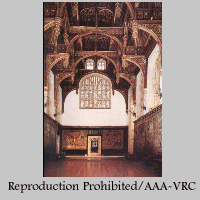
3. Hampton Court Palace. The Great Hall was begun by Henry VIII in January 1532 and completed in the summer of 1535. It is still the hall of Henry's time, except it has lost its great louvre in the roof (opening to let smoke out) and in the 1920s the Tudor paint was stripped off the roof timbers. This was before the advent of careful attitudes about historic preservation; such a travesty would not happen today.

4. Paycock's House, Great Coggeshell, Essex. Interior of the Hall and detail of its ceiling above. One can see the half timbered construction filled in with wattle and daub. For the most part medieval building systems and details continued into the Tudor period.
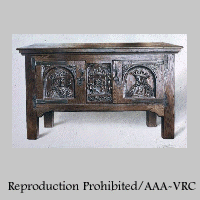
5. A hutch table known as Sudburry's Hutch. From St. james Church, South Lincolnshire. Length 63 inches.
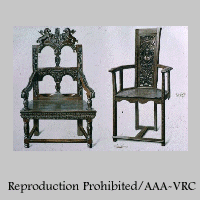
6. Left: Chair of yew wood, about 1550. The cresting of the chair reveals a coat of arms bearing a lion rampant, Tudor rose, and unicorns. Right: Oak cacqueteuse (chair) about 1535.